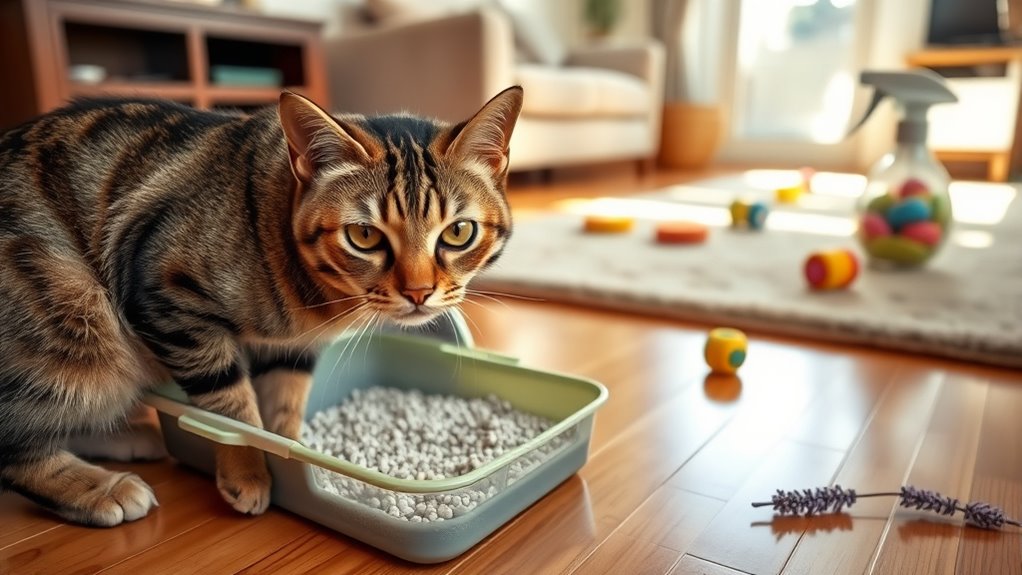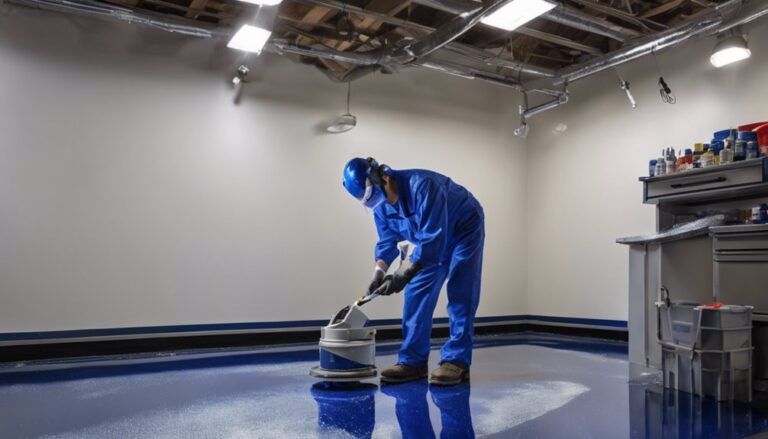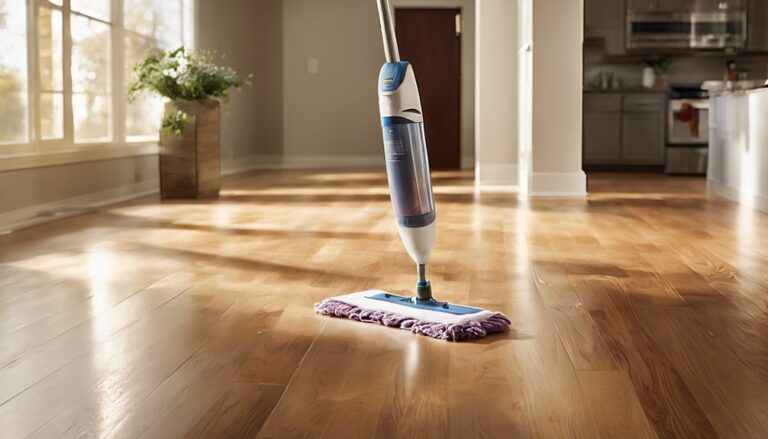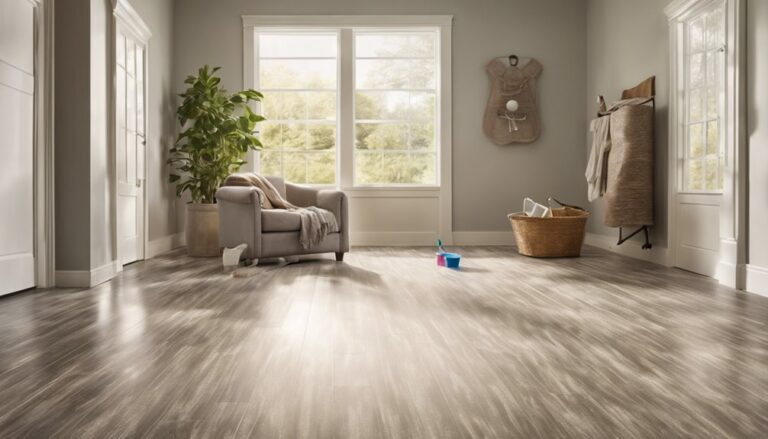If your cat is peeing on the floor, start by ruling out medical issues like infections. Make sure the litter box is clean, placed in a quiet spot, and uses litter your cat prefers. Stress can cause accidents, so create a calm environment and use enrichment or pheromone diffusers. Clean any accidents with enzymatic cleaners to remove odors fully. Positive reinforcement helps encourage proper habits. Keep going for more detailed steps to help your cat feel comfortable and secure.
Identifying Medical Causes for Inappropriate Urination
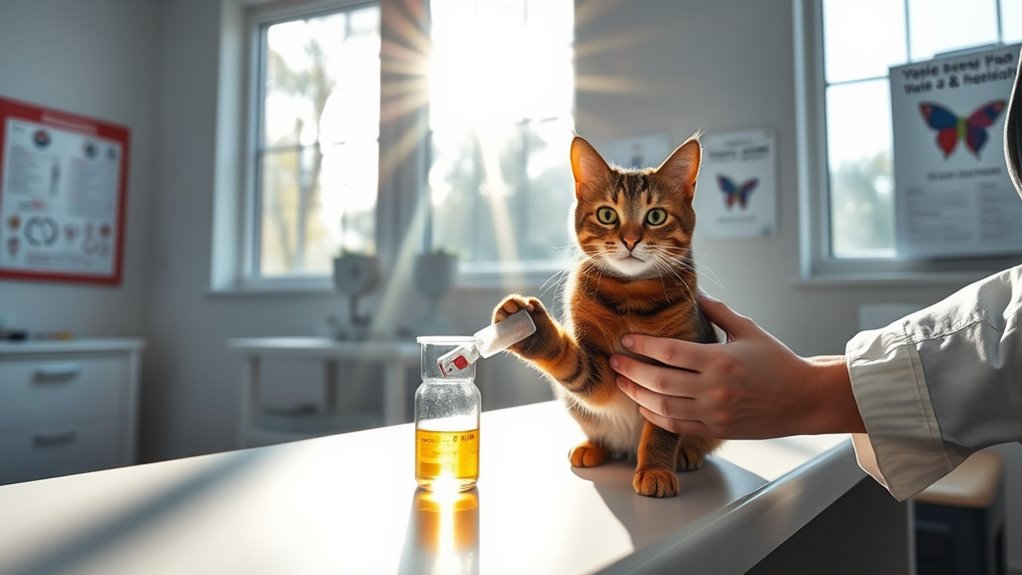
Before you try behavioral solutions, it’s important to reflect that your cat’s inappropriate urination might have a medical cause. Conditions like urinary tract infections or kidney disease can cause discomfort, leading your cat to avoid the litter box. If your cat suddenly starts peeing on the vloer, don’t dismiss it as stubbornness or a bad habit. You need to contemplate a vet visit to rule out these health issues. Identifying medical causes early guarantees your cat gets proper treatment, preventing further complications and discomfort. Understanding this allows you to address the problem effectively, restoring both your cat’s well-being and your home’s cleanliness. Remember, your cat’s freedom to live healthily depends on your attentiveness to these crucial signs.
Assessing and Improving Litter Box Conditions
Once you’ve ruled out medical issues, the next step is to examine your cat’s litter box setup. Proper litter box placement is essential—choose a quiet, low-traffic area that offers privacy but is easily accessible. Avoid placing the box near noisy appliances or food dishes, as this can discourage use. Consider the litter type carefully; many cats prefer fine-grained, unscented clumping litter, which mimics natural textures and reduces odor. If your cat resists the current litter, try gradually shifting to a new type. Also, make sure the box is clean—scoop daily and change litter regularly to maintain freshness. By optimizing these conditions, you create a more inviting environment that respects your cat’s natural habits, reducing accidents and restoring harmony to your home.
Managing Stress and Environmental Triggers
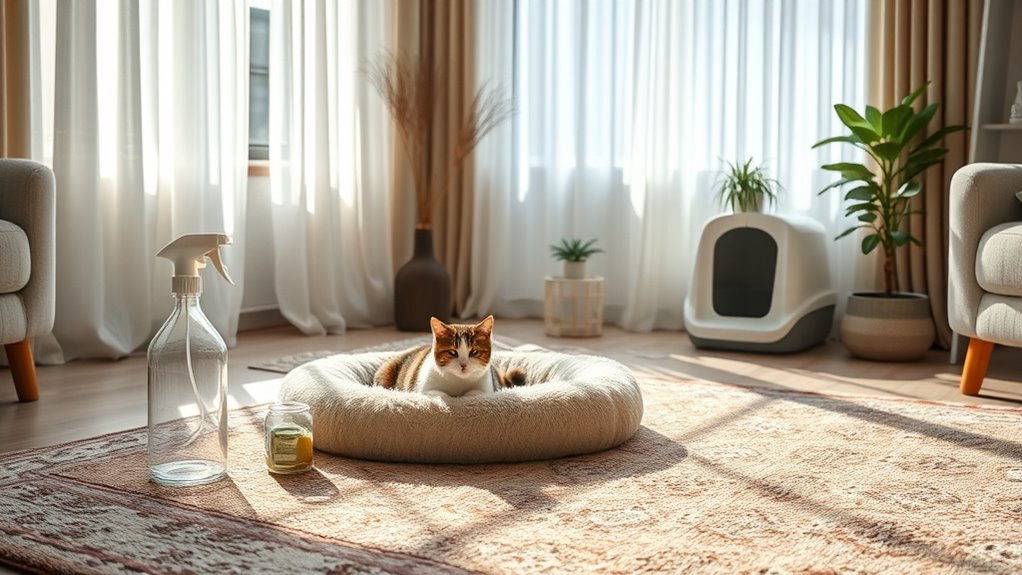
Although you’ve addressed medical and litter box issues, your cat’s inappropriate urination may still persist due to stress or environmental changes. To help your cat regain comfort, focus on stress reduction techniques. Create a calm, predictable environment by minimizing loud noises and sudden changes. Environmental enrichment is vital—provide toys, scratching posts, and elevated spaces to keep your cat engaged and confident. Consider pheromone diffusers to promote relaxation. If new pets or people have arrived, gradually introduce them to reduce anxiety. Remember, your cat expresses discomfort through behavior, so by enhancing their environment and reducing stress, you support their emotional well-being. This approach not only prevents floor urination but also fosters a freer, happier life for your feline companion.
Cleaning and Removing Odors From Soiled Areas
Three key steps will help you effectively clean and remove odors from areas where your cat has peed on the floor. First, blot the urine immediately to prevent stains. Next, apply enzymatic odor neutralizers that break down urine molecules instead of masking them. Finally, use proper cleaning techniques to guarantee no residue remains, reducing the chance of repeat accidents.
| Stap | Actie | Doel |
|---|---|---|
| Blotting | Absorb urine promptly | Prevent stains and spread |
| Odor Neutralizers | Use enzymatic cleaners | Eliminate urine scent fully |
| Schoonmaak | Deep clean affected area | Remove residues that attract cat |
| Drogen | Make sure area is completely dry | Discourage re-marking |
Following these steps will free your home from lingering odors and restore a fresh environment for you and your cat.
Behavioral Training and Positive Reinforcement Techniques
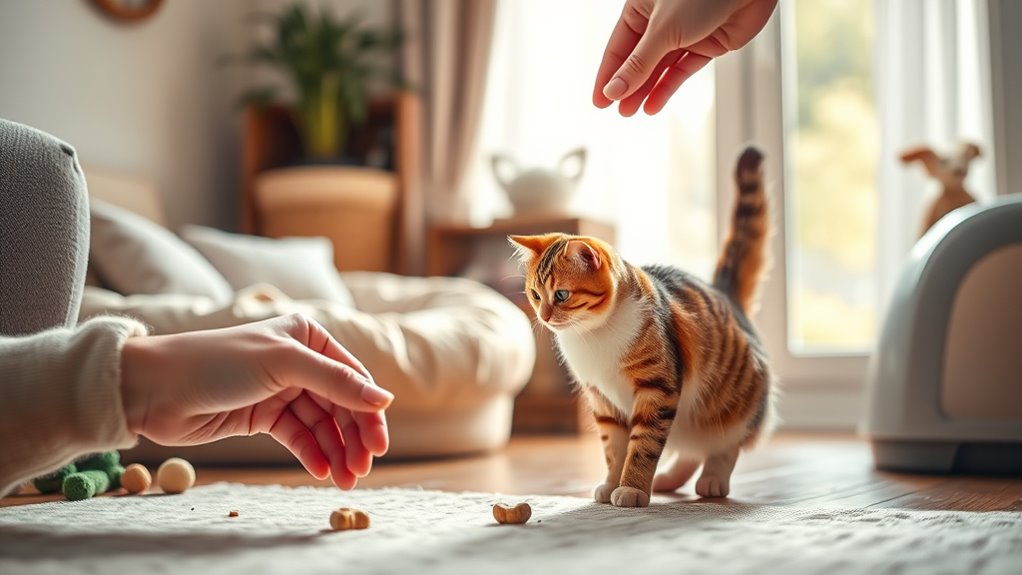
When your cat continues to pee on the floor despite thorough cleaning, addressing the behavior directly through training becomes essential. You’ll want to use behavioral rewards to encourage your cat to use the litter box consistently. Treats, praise, or affection immediately following the desired behavior reinforce positive habits. Remember, training consistency is key; make sure everyone in your household follows the same approach and routines. Avoid punishment, as it can increase stress and worsen the issue. Instead, focus on redirecting your cat gently to the litter box whenever you notice signs of restlessness or pre-peeing behavior. Over time, this positive reinforcement combined with consistent routines helps your cat feel secure and free to choose appropriate elimination spots.

